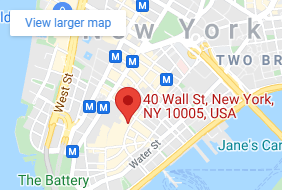“No-zones” are large blind spots around commercial vehicles, like semi-trucks, 18-wheelers, and buses. Truck and bus drivers have no way of seeing vehicles that are in these no-zones. Drivers in passenger vehicles should be aware of these danger zones and attempt to stay out of them whenever possible. Truck drivers also should watch for vehicles that move out of their sight and should do everything they possibly can alert drivers who might be in their no-zones when they are about to perform any maneuver on the road.
This means signaling lane changes in advance, allowing adequate stopping distance when braking, and always remaining alert for vehicles behind and on either side of the trailer. If a truck driver does not keep the no-zones in mind and drive responsibly, severe and possibly fatal accidents could happen.
Where Are the No-Zones?
Several spots around a commercial truck or bus are considered no-zone areas, where it is difficult for the driver to see other vehicles. These four areas include:
- The narrow space in front of the truck or bus
- The extended area directly behind the truck or bus
- The space on the driver’s side of the truck or bus
- The space on the passenger’s side of the truck or bus
How Can I Avoid No-Zones?
The first step is understanding what no-zones are and where they are located. It’s vital you then stay away from these zones as much as you can. If you are in a truck or bus’s no-zone, you should drive more defensively and be wary of the fact that the driver likely cannot see you.
It can sometimes be tricky to know whether or not you are in a no-zone. A good rule of thumb is always to make sure that you can see the driver’s face. If you can see the driver’s face in their side mirrors, they can see you, and you are not in a no-zone. But if you can’t see the driver’s face in their side mirrors, then they can’t see you and they likely have no idea that you are driving behind them or next to them.
Don’t ever cut off a large truck or bus as their front no-zone area extends approximately 20 feet ahead of the vehicle. Avoid tailgating, or following too closely, large trucks and buses as their rear no-zone extends nearly 200 feet from the back of the vehicle. In addition to being in the rear no-zone, other dangers include debris falling from a truck and onto your vehicle. Tailgating also restricts your visibility and can decrease reaction time in case you have to stop suddenly.
Common No-Zone Accident Injuries
Because of the sheer size and weight of commercial trucks and buses, the injuries sustained in these accidents are often catastrophic or even fatal. Truck and bus accidents can result in a wide array of injuries, including (but not limited to):
- Traumatic brain injuries (TBIs)
- Neck and back injuries
- Injuries to the spinal cord (including partial or total paralysis)
- Internal organ injuries
- Broken bones and lacerations
- Burns
- Amputation and disfigurement
If a truck driver is careless, reckless, or was otherwise negligent and collided with a vehicle in a no-zone, the trucker and potentially the company responsible for hiring, training, and supervising them could be held liable for any resulting injuries and property damage.
In tragic cases, a no-zone truck accident could prove to be fatal. When this happens, surviving family members should not hesitate to discuss their legal options with an attorney who has experience handling wrongful death claims.
Contact a New York No-Zone Accident Lawyer
Were you or a loved one injured in a truck or bus accident in New York or Long Island? If so, reach out to Finz & Finz, P.C., to get the knowledgeable, qualified legal assistance you deserve. We will discuss all of your legal options with you when you call (855) TOP-FIRM or contact us online to schedule a free consultation.





























